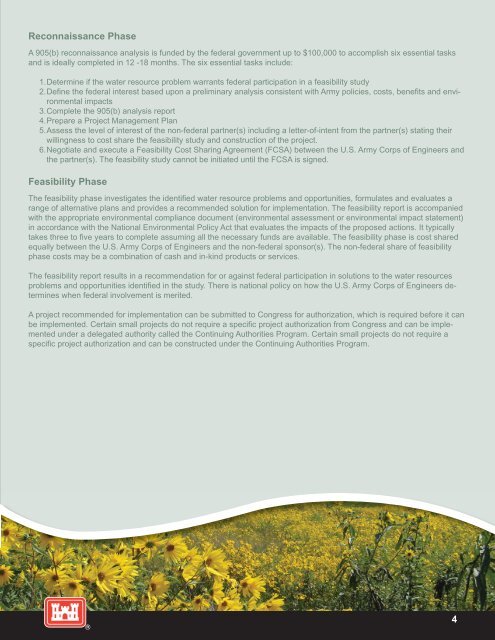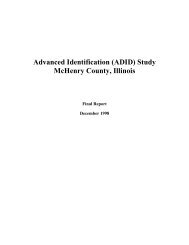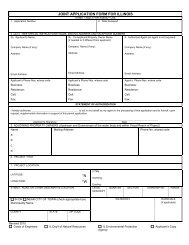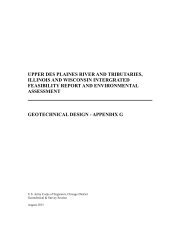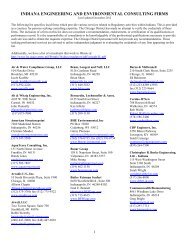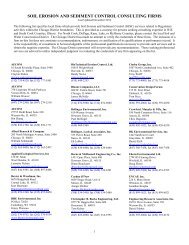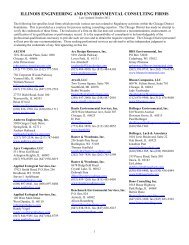Civil Works Policy Guidebook.indd - Chicago District - U.S. Army
Civil Works Policy Guidebook.indd - Chicago District - U.S. Army
Civil Works Policy Guidebook.indd - Chicago District - U.S. Army
You also want an ePaper? Increase the reach of your titles
YUMPU automatically turns print PDFs into web optimized ePapers that Google loves.
Reconnaissance Phase<br />
A 905(b) reconnaissance analysis is funded by the federal government up to $100,000 to accomplish six essential tasks<br />
and is ideally completed in 12 -18 months. The six essential tasks include:<br />
1. Determine if the water resource problem warrants federal participation in a feasibility study<br />
2. Define the federal interest based upon a preliminary analysis consistent with <strong>Army</strong> policies, costs, benefits and environmental<br />
impacts<br />
3. Complete the 905(b) analysis report<br />
4. Prepare a Project Management Plan<br />
5. Assess the level of interest of the non-federal partner(s) including a letter-of-intent from the partner(s) stating their<br />
willingness to cost share the feasibility study and construction of the project.<br />
6. Negotiate and execute a Feasibility Cost Sharing Agreement (FCSA) between the U.S. <strong>Army</strong> Corps of Engineers and<br />
the partner(s). The feasibility study cannot be initiated until the FCSA is signed.<br />
Feasibility Phase<br />
The feasibility phase investigates the identified water resource problems and opportunities, formulates and evaluates a<br />
range of alternative plans and provides a recommended solution for implementation. The feasibility report is accompanied<br />
with the appropriate environmental compliance document (environmental assessment or environmental impact statement)<br />
in accordance with the National Environmental <strong>Policy</strong> Act that evaluates the impacts of the proposed actions. It typically<br />
takes three to five years to complete assuming all the necessary funds are available. The feasibility phase is cost shared<br />
equally between the U.S. <strong>Army</strong> Corps of Engineers and the non-federal sponsor(s). The non-federal share of feasibility<br />
phase costs may be a combination of cash and in-kind products or services.<br />
The feasibility report results in a recommendation for or against federal participation in solutions to the water resources<br />
problems and opportunities identified in the study. There is national policy on how the U.S. <strong>Army</strong> Corps of Engineers determines<br />
when federal involvement is merited.<br />
A project recommended for implementation can be submitted to Congress for authorization, which is required before it can<br />
be implemented. Certain small projects do not require a specific project authorization from Congress and can be implemented<br />
under a delegated authority called the Continuing Authorities Program. Certain small projects do not require a<br />
specific project authorization and can be constructed under the Continuing Authorities Program.<br />
R<br />
4


